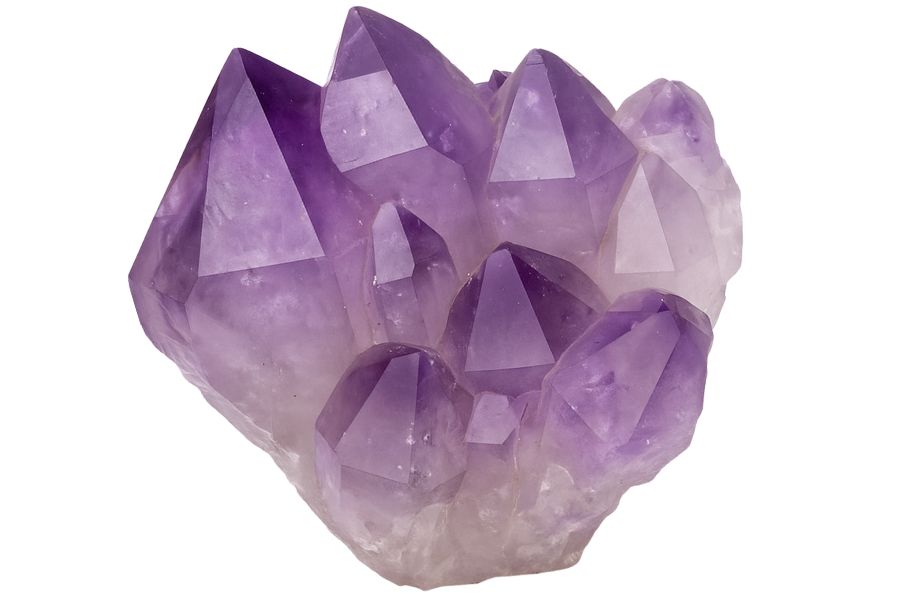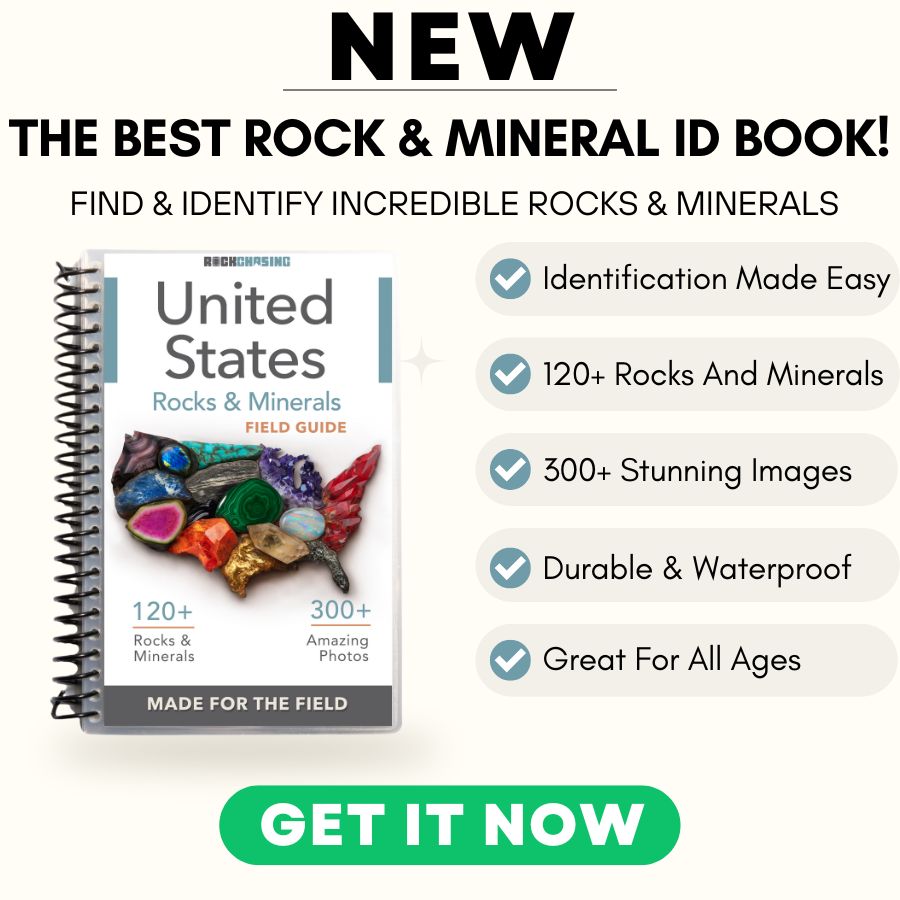Across riverbeds, hillsides, and wooded clearings, Georgia amethyst hides in plain sight for those who know what to look for. The state has long been home to crystal-rich pockets that reward patience and curiosity.
Each stone tells a quiet story of minerals formed deep underground before being brought to the surface over ages. The result is a gem that captures both color and history in every facet.
Knowing where to begin your search can make all the difference between leaving empty-handed and building a collection that shines with true Georgia amethyst. The right knowledge can turn a simple outing into a rewarding discovery.
What is Georgia Amethyst?
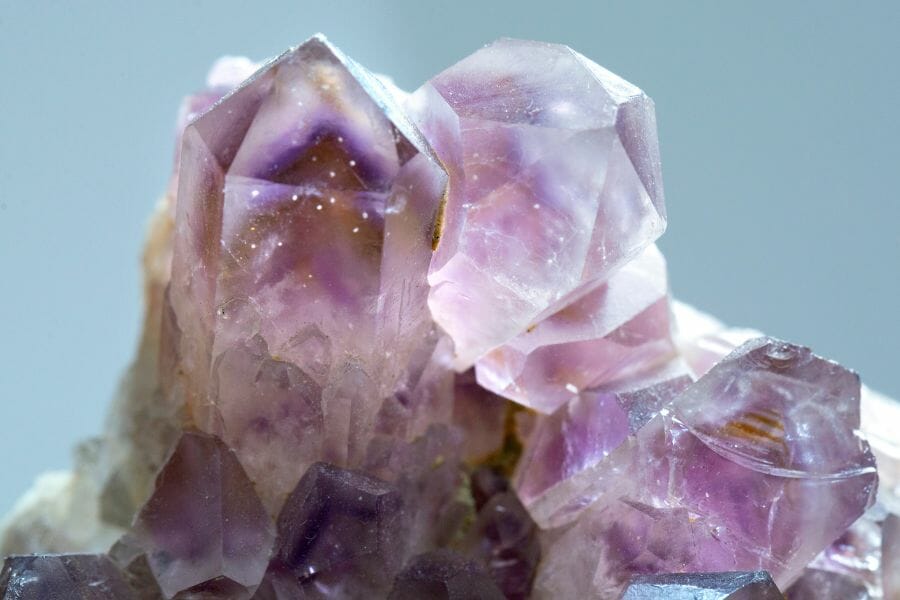
Amethyst is a purple-hued, dazzling gemstone prized for centuries for its beauty and spiritual significance. This gemstone is a type of quartz formed in geodes, like hidden treasure troves tucked away in the nooks and crannies of rocky outcrops.
To find amethyst, you must know where to look – it’s like searching for a needle in a haystack! Common locations for amethyst include mountainous areas and rocky terrain, where the crystals are formed deep within the earth’s crust and then brought to the surface over time through geological processes.
You might have to trek through rough terrain and climb cliffs to get to these precious stones, but the reward is worth it!
Once you find an amethyst, you’ll feel like you’ve hit the jackpot – it’s like finding a diamond in the rough. With a bit of luck and determination, you, too, can uncover the hidden beauty of amethyst.
Brandberg Amethyst
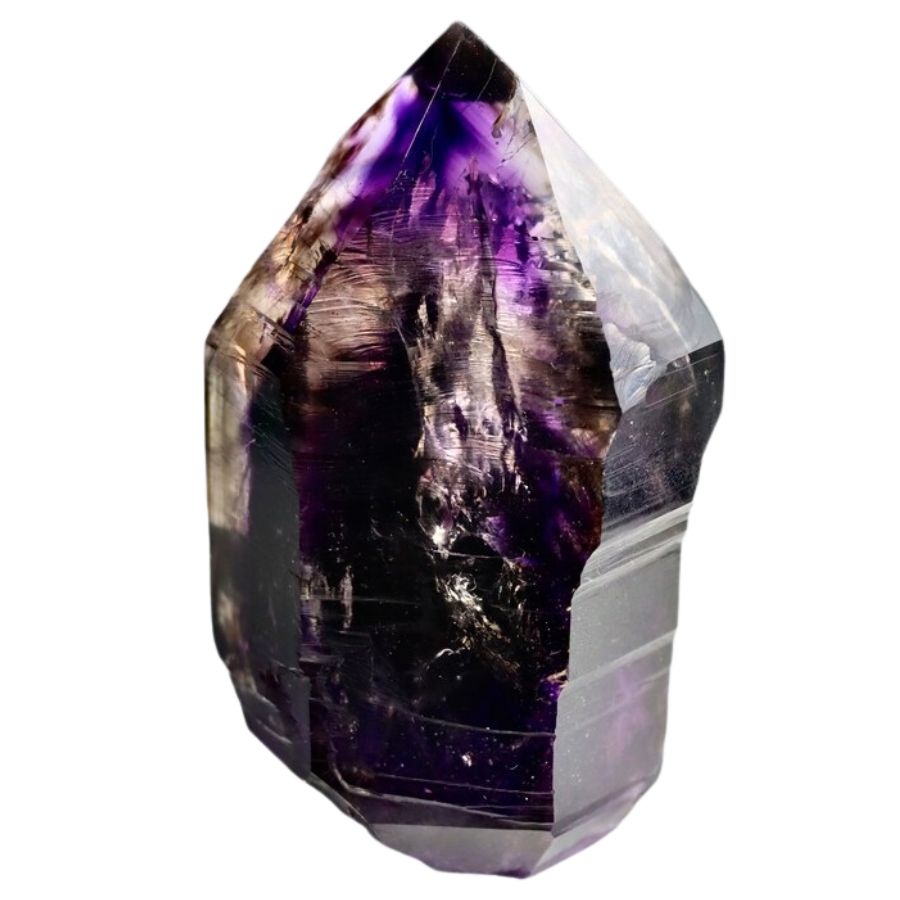
Brandberg amethyst is a captivating variety of quartz, renowned for its unique blend of elements like silicon dioxide, iron, and trace amounts of other minerals.
These components come together to form a crystal that not only holds geological significance but also showcases a striking array of hues and features.
The appearance of Brandberg amethyst is truly remarkable, characterized by its color range from deep purples to vibrant lilacs.
The varying shades are a result of the iron content within the crystal structure, which can fluctuate, leading to diverse color intensities and patterns in each specimen.
Brandberg amethyst stands out for its inclusion patterns and the presence of phantom crystals within its structure.
These internal “ghosts” are formed by layers of other minerals, offering a glimpse into the crystal’s growth history and adding to its allure for those fascinated by the wonders of the natural world.
If you want REAL results finding incredible rocks and minerals you need one of these 👇👇👇
Finding the coolest rocks in isn’t luck, it's knowing what to look for. Thousands of your fellow rock hunters are already carrying Rock Chasing field guides. Maybe it's time you joined the community.
Lightweight, mud-proof, and packed with clear photos, it’s become the go-to tool for anyone interested discovering what’s hidden under our red dirt and what they've already found.
Join them, and make your next rockhounding trip actually pay off.
What makes it different:
- 📍 Find and identify 140 incredible crystals, rocks, gemstones, minerals, and geodes across the USA
- 🚙 Field-tested across America's rivers, ranchlands, mountains, and roadcuts
- 📘 Heavy duty laminated pages resist dust, sweat, and water
- 🧠 Zero fluff — just clear visuals and straight-to-the-point info
- ⭐ Rated 4.8★ by real collectors who actually use it in the field
Ametrine
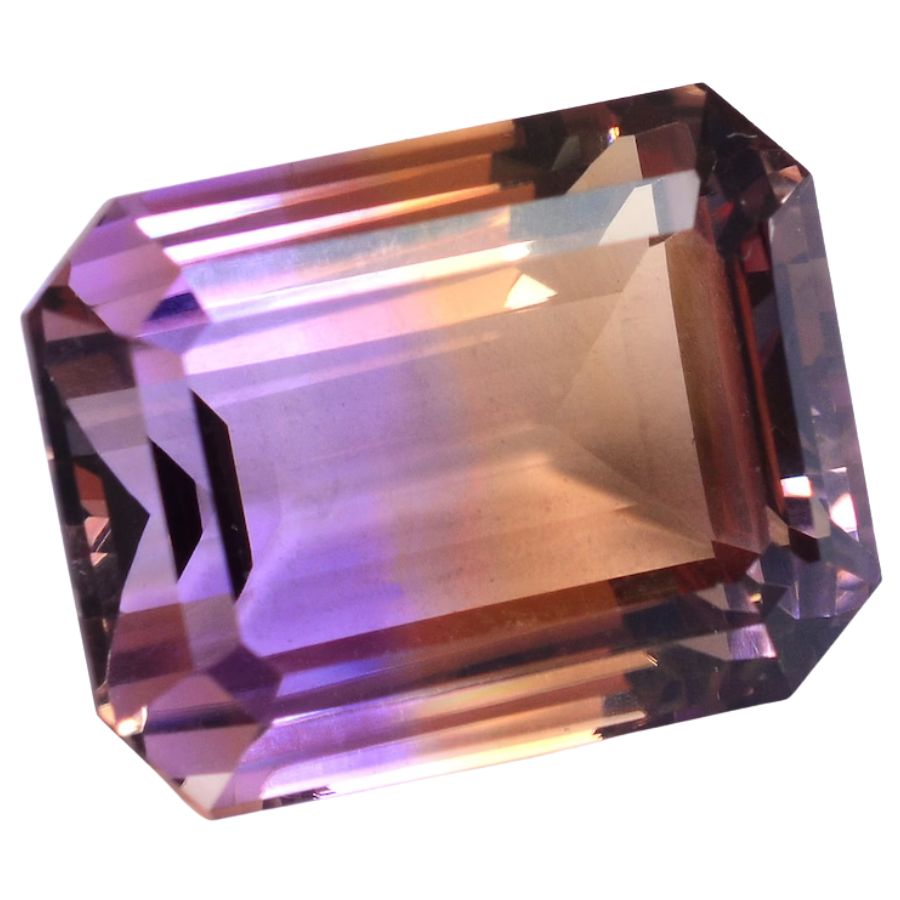
Ametrine is an intriguing mineral that captures the imagination of those interested in rocks and minerals. This unique gem is a combination of two quartz varieties: amethyst and citrine.
The beauty of ametrine lies in its striking coloration, which ranges from a blend of vibrant purple and golden yellow.
This color variation is a result of differing oxidation states of iron within the crystal, influenced by temperature and radiation exposure during formation.
Ametrine is notable for its distinct zoning of colors, where purple and yellow hues can be clearly seen in the same crystal. This feature, combined with its unique composition, sets ametrine apart from different kinds of amethyst.
Chevron Amethyst
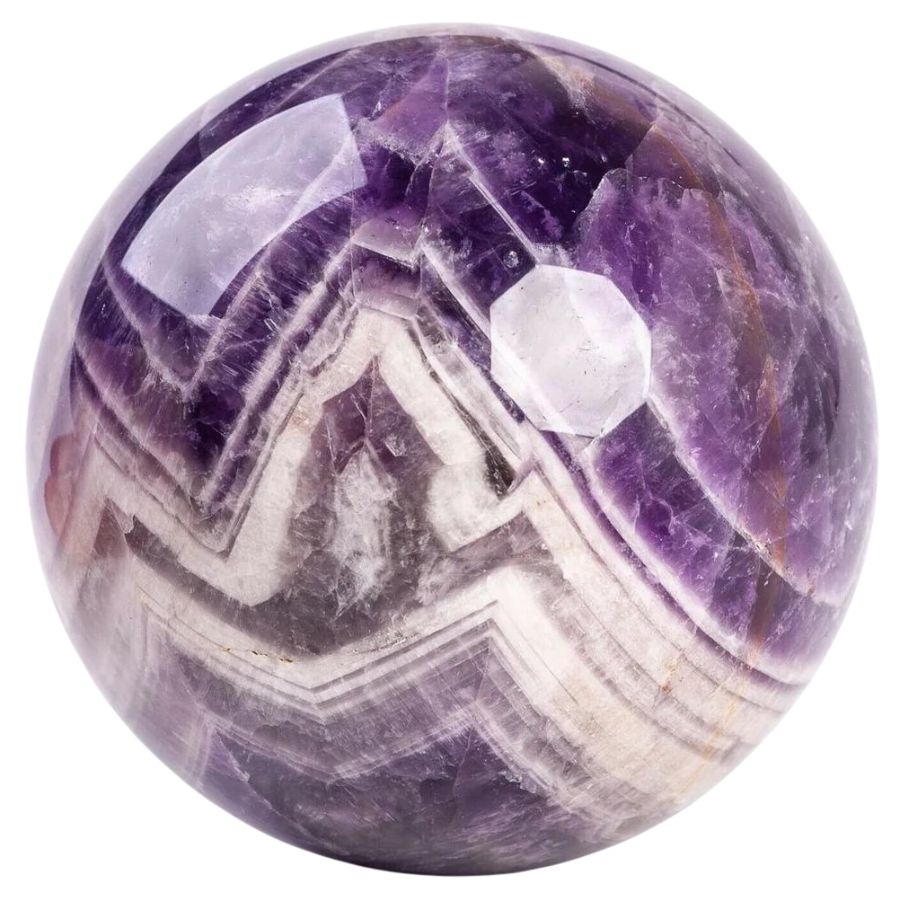
Chevron amethyst is a captivating type of amethyst known for its distinctive pattern. It’s easily recognized by its unique V-shaped or chevron patterns, which are a combination of deep purple and white or clear quartz layers.
These patterns and color variations are due to differences in iron content and other impurities in the layers, resulting in the striking contrast seen in chevron amethyst.
Chevron amethyst is not only beautiful but also a subject of interest for its formation process. The alternating layers of colors provide a visual record of the crystal’s growth history, making it a fascinating example for geological study.
Auralite
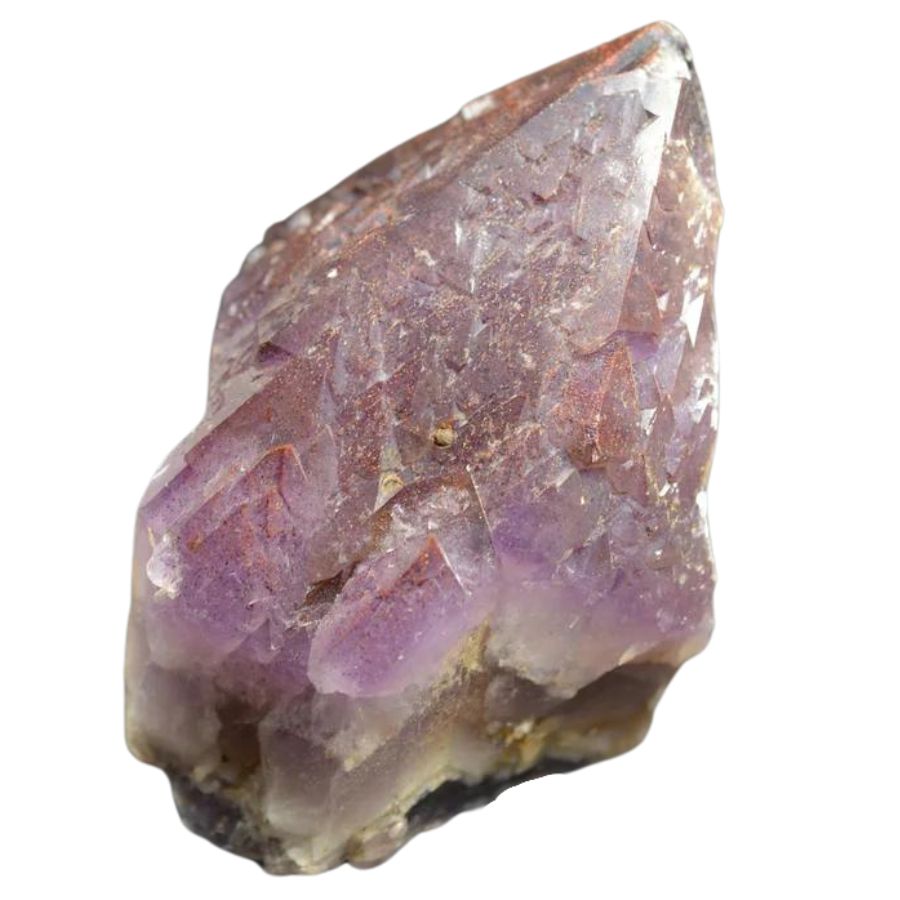
Auralite is an intriguing type of mineral that’s a combination of amethyst and several other trace minerals. Its composition includes silicon dioxide from amethyst, along with a mixture of elements like iron, copper, and titanium.
This mineral’s appearance is quite distinct, often showing a deep purple hue similar to what amethyst looks like, but with additional layers or inclusions of other colors.
These variations in color are due to the various trace minerals present in auralite, each contributing to its unique and colorful display.
A standout feature of auralite is the presence of multiple minerals within a single specimen, sometimes including up to 23 different types.
This mix not only gives auralite its diverse color range but also makes it a fascinating subject for those studying minerals and their properties.
Prasiolite
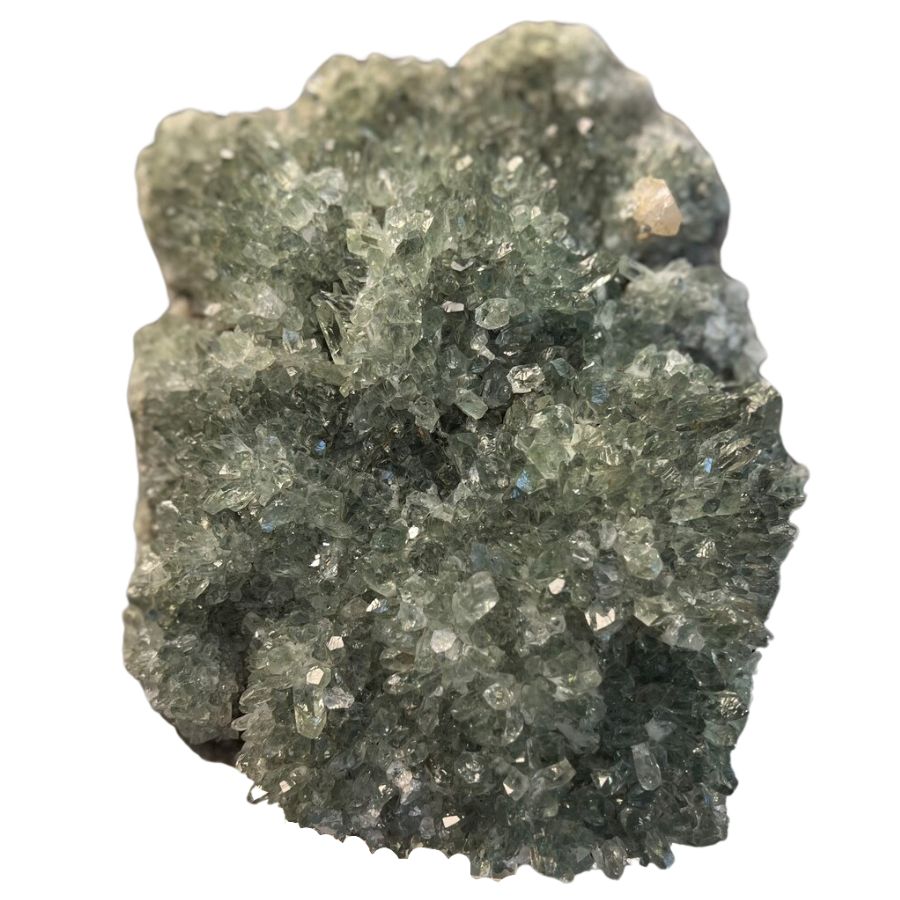
Prasiolite is an interesting variety of quartz. It often contains traces of iron, which play a key role in giving prasiolite its unique color.
This mineral is known for its beautiful green color, which can range from a light, almost transparent green to a deeper, more olive shade.
The green color of prasiolite is usually the result of heat treatment, either occurring naturally in the earth or artificially, transforming certain types of amethyst or yellowish quartz into prasiolite.
Naturally-occurring prasiolite is rare, as most available prasiolite is created through artificial means.
Cacoxenite amethyst
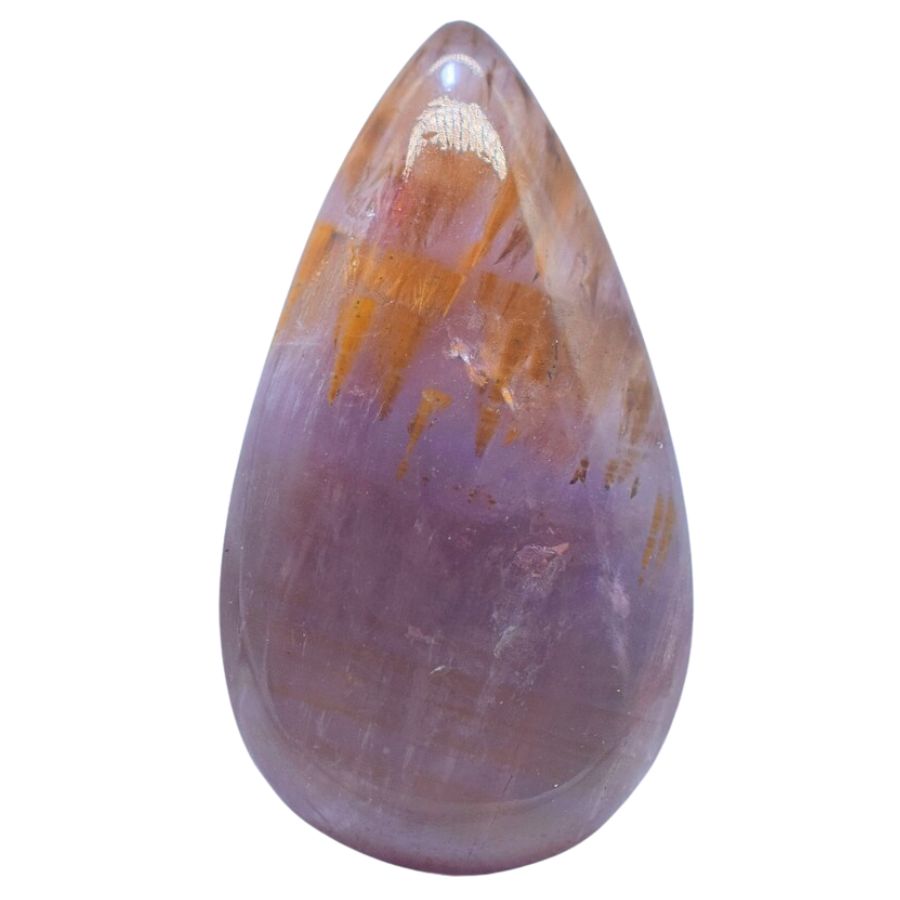
Cacoxenite is an intriguing mineral primarily composed of iron, aluminum, and phosphate, along with other elements like oxygen and hydrogen. This combination of elements gives cacoxenite its unique chemical makeup and properties.
Cacoxenite typically exhibits a striking golden-yellow to brownish-yellow color. This coloration is mainly due to the presence of iron in its structure, which imparts the rich hues that characterize this mineral.
A notable feature of cacoxenite is that it often forms as an inclusion within other minerals, such as amethyst, creating a beautiful contrast.
These inclusions of cacoxenite can appear as radiating or feathery formations, adding an intricate and fascinating aspect to the host mineral.
Where you can find cacoxenite amethyst
Cacoxenite amethyst can be found in the United States, Germany, and Brazil.
Phantom Amethyst
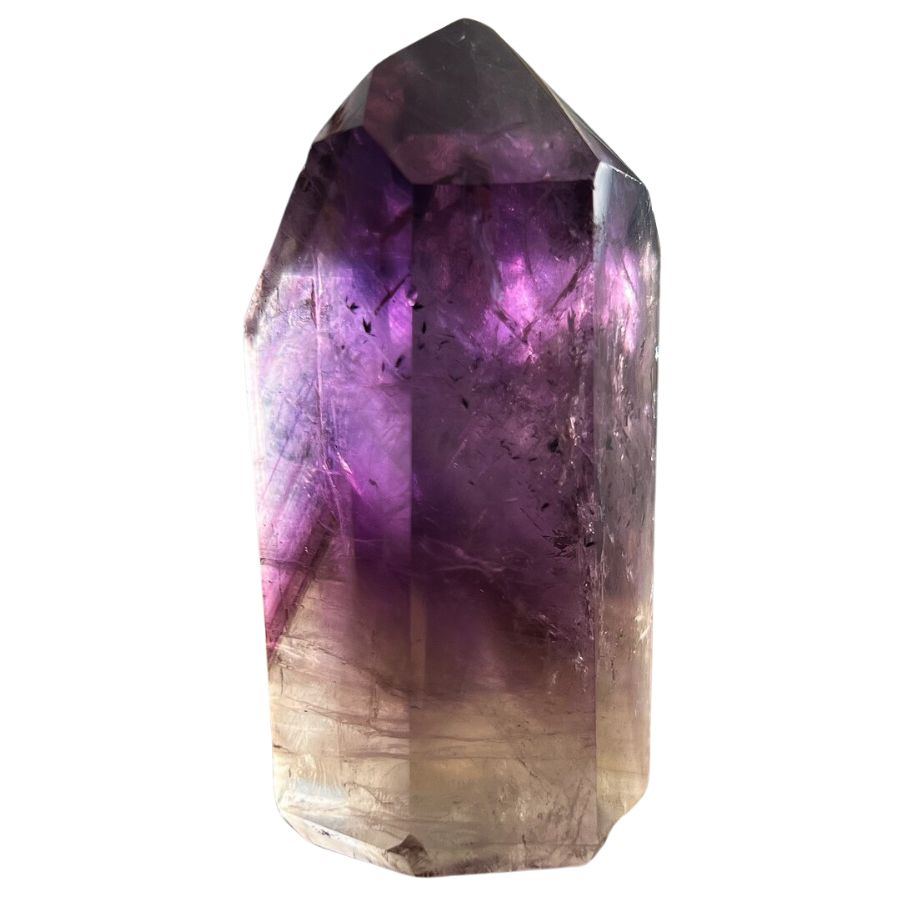
Phantom amethyst is a fascinating variety of amethyst. It stands out due to the presence of “phantoms” – ghost-like inclusions within its structure, which give it a distinct and layered look.
In phantom amethyst, one can observe a range of colors from deep purples to lighter hues, often appearing in layers or as phantom shapes within the crystal.
These color variations are typically due to trace amounts of iron and other minerals that get trapped during the crystal’s growth, influencing its final color.
Phantom amethyst provides a visual record of the crystal’s growth history. The crystal outlines and layers within the stone are formed by pauses in the crystal’s growth, offering a glimpse into geological processes over time.
Where you can find phantom amethyst
There are notable sources of phantom amethyst in Brazil, Madagascar, and the United States. In the United States, phantom amethyst is often discovered in states like Arizona, North Carolina, and Colorado.
Pink Amethyst
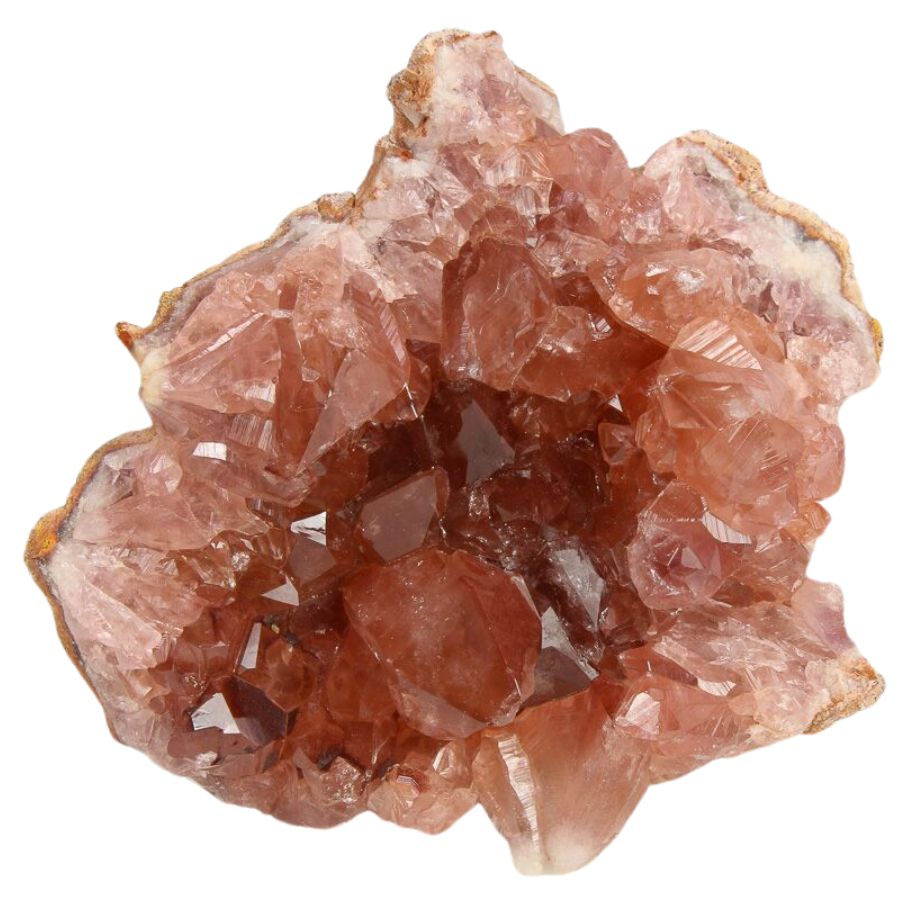
Pink amethyst is a unique and relatively rare variety of the common mineral amethyst. The presence of trace elements, particularly iron, contributes to its distinct pink hue.
The appearance of pink amethyst ranges from a delicate, light pink to a deeper, more vivid pink.
This variation in color is largely due to the concentration and distribution of iron within the crystal, which affects how light interacts with the mineral.
Pink amethyst is its often found in geodes or clusters, where multiple crystals grow together in a captivating display.
Amethyst Geodes
Amethyst geodes are fascinating natural formations, with traces of iron giving them their famous purple color. These geodes form in volcanic rocks and are essentially hollow, lined with amethyst crystals.
A key feature of amethyst geodes is their crystal-lined cavity, which creates a stunning natural display. When you look inside an amethyst geode, you’ll see a range of purple hues, from light lavender to deep violet.
The color variation is due to the amount of iron and the specific conditions under which the crystals formed, such as temperature and the presence of other trace elements.
Geodes can vary greatly in size, from small enough to fit in your hand to large enough to stand in, and each one is unique in its crystal formation and color pattern.
Where you can find amethyst geodes
Amethyst geodes are commonly found in Brazil and Uruguay. In the United States, they can also be found in places like Arizona and Oregon.
Cactus Amethyst
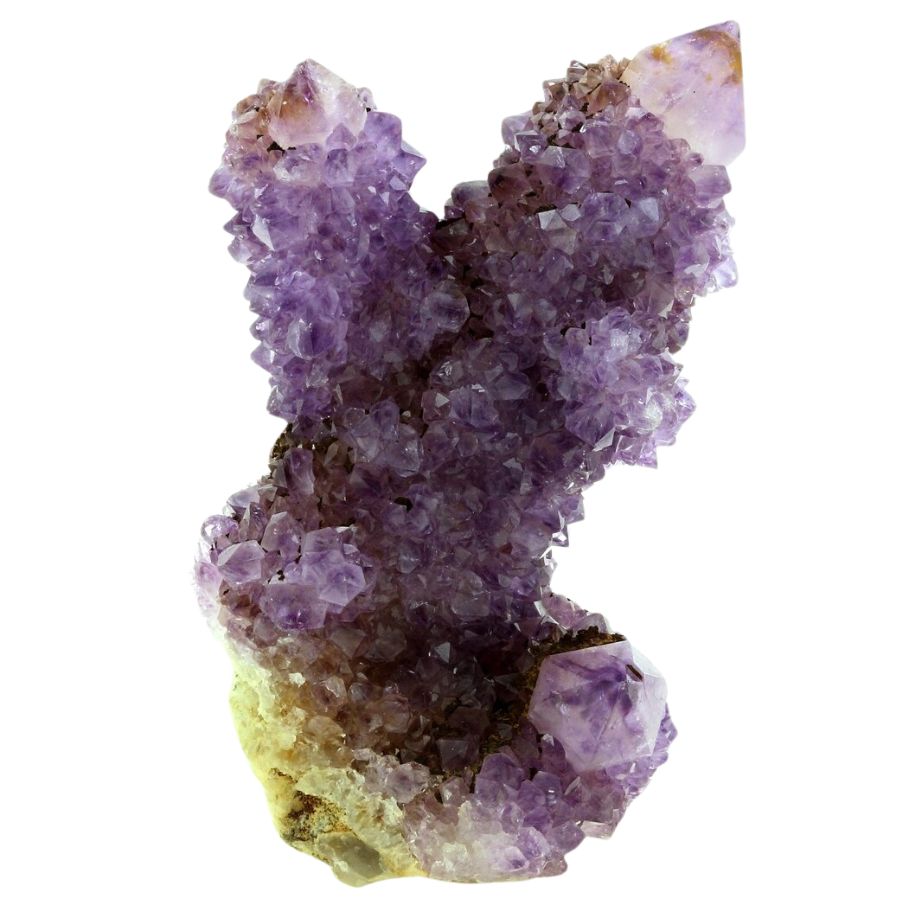
Cactus amethyst is also known as spirit quartz. Its unique structure is enriched with additional minerals, which contribute to its distinctive appearance.
This type of amethyst is characterized by a central quartz crystal covered in smaller crystal growths, giving it a spiky, cactus-like appearance.
The color ranges from pale lilac to deep purple, with the variations largely influenced by the amount of iron and other trace elements within the crystals.
A notable feature of cactus amethyst is the way the smaller crystals radiate outward from the central crystal.
This formation not only creates a stunning visual effect but also makes each piece of cactus amethyst a unique and fascinating specimen.
Regarding the price of amethyst, it can vary significantly based on the size, quality, and depth of color. While smaller, less vibrant pieces are relatively affordable, larger specimens with deep, rich colors can be quite valuable.
Scepter Amethyst
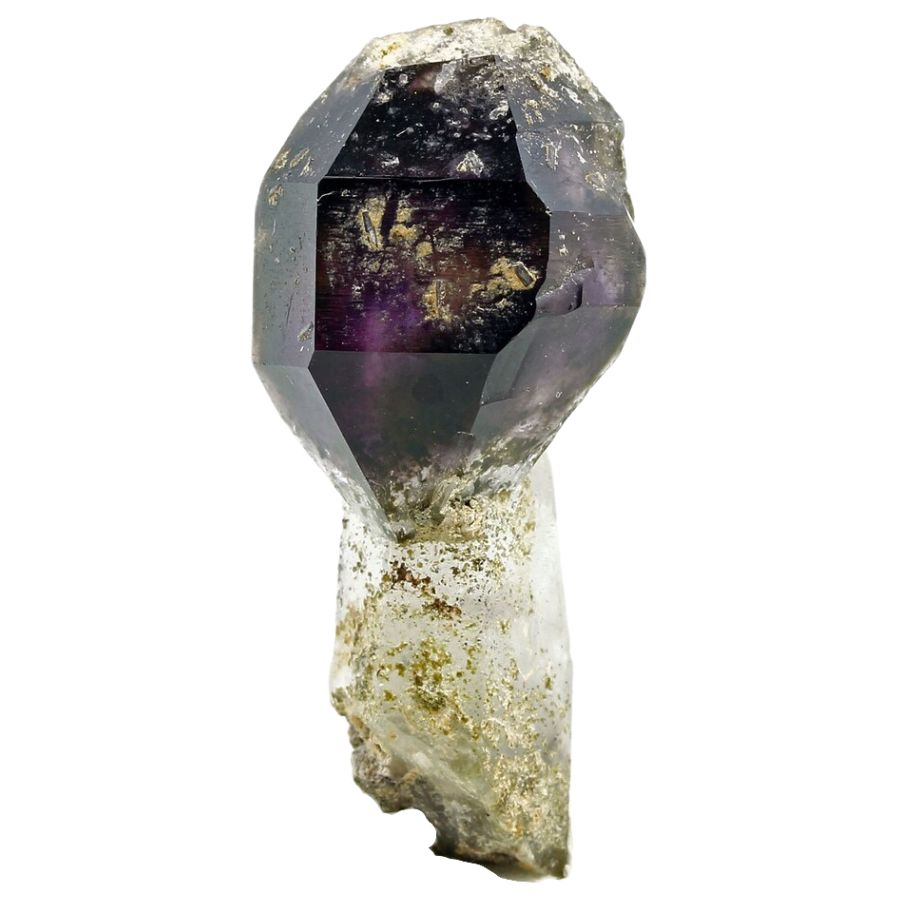
Scepter amethyst gets its name from its distinctive scepter-like formation, where a larger crystal cap sits atop a smaller crystal stem.
The color variations in scepter amethyst are influenced by the amount of iron and other trace elements within the crystal, coupled with the specific conditions under which it formed.
A key feature of scepter amethyst is its symbolic scepter shape, representing a crystal formation process where a second phase of growth occurs on an already-formed crystal base. This creates a striking and regal scepter-like appearance.
Where you can find scepter amethyst
Scepter amethyst can be found in several locations around the world, with notable spots including Brazil, Madagascar, and Zambia.
In the United States, areas like Washington State and North Carolina are also known for their scepter amethyst discoveries.
Smoky Amethyst
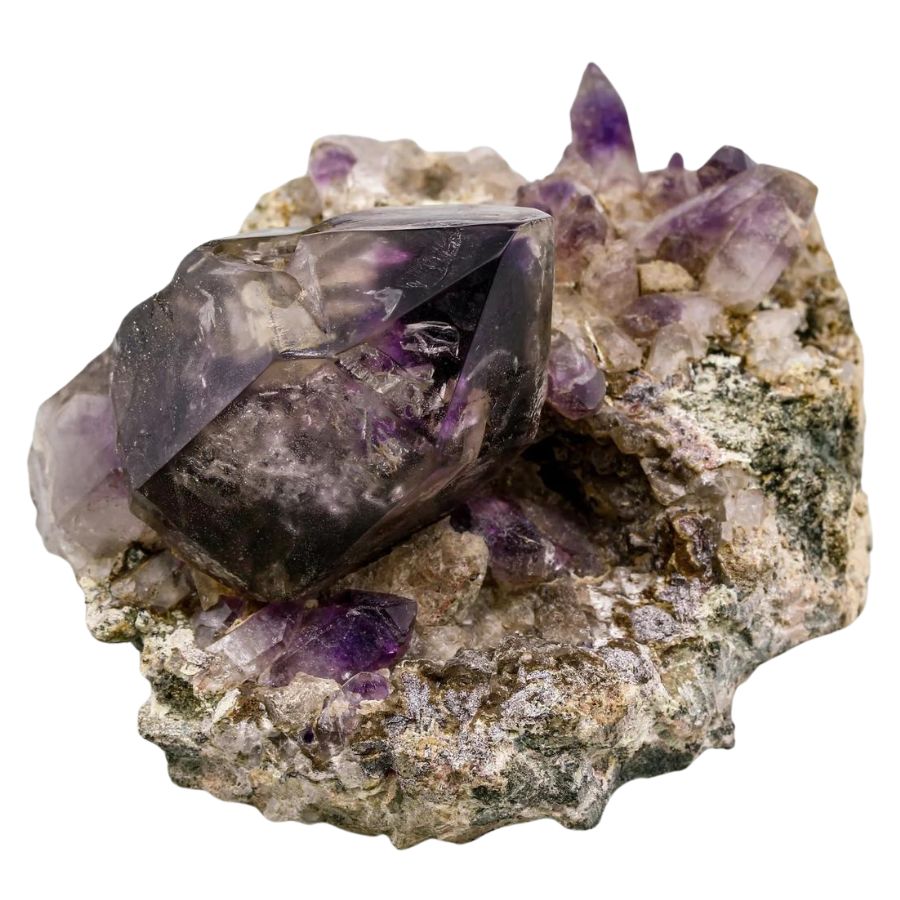
Smoky amethyst is a unique variation among amethyst types that combines features of both smoky quartz and amethyst. The presence of trace elements like iron and aluminum gives it its unique coloration.
This mineral exhibits a blend of smoky brown and purple hues, creating a captivating visual effect. This is due to natural irradiation and the varying amounts of impurities, which influence the depth and intensity of both the smoky and purple colors.
A notable feature of smoky amethyst is its dual-tone appearance, which is not commonly found in other quartz varieties.
Where you can find smoky amethyst
Smoky amethyst can be found in several countries, including Brazil. It’s also discovered in places like Africa and the United States.
- The deep experience and understanding of our team about the area
- Recommendations from local groups and clubs
- How easy it is to get the a particular location
- Safety and potential hazards when collecting
- Weighing private and public locations
- The ability for both experienced and novice amethyst enthusiasts to find great samples
With these factors in mind we’ve been able to put together a fantastic list that just about anyone can use!
The Best Spots To Find Amethyst in Georgia
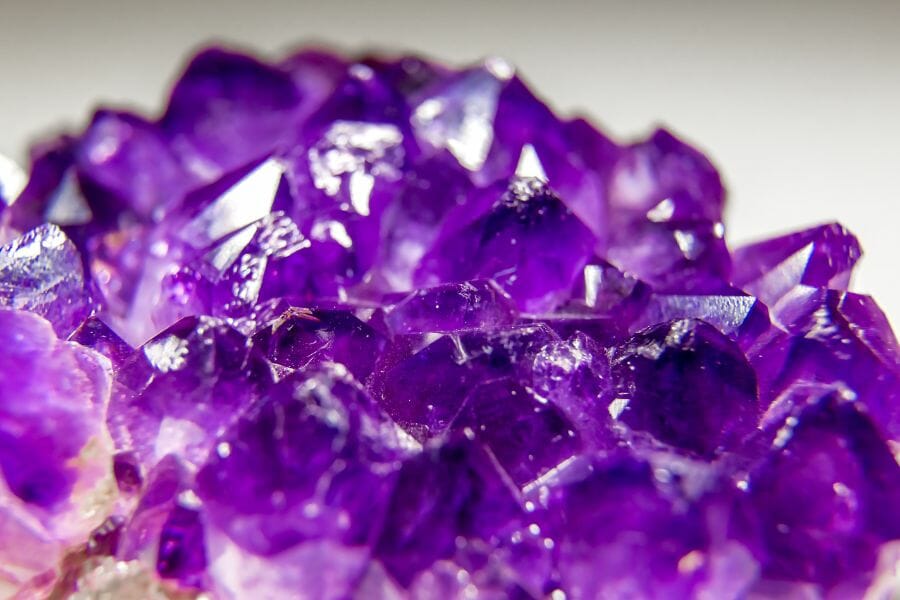
Here are the best places in Georgia to find amethysts, in our opinion. There are numerous excellent locations to mine for gems in Georgia, but relatively few are great for finding amethysts. Even though some of these places are not well-known, they have regularly provided us with exciting options while looking.
Always Confirm Access and Collection Rules!
Before heading out to any of the locations on our list you need to confirm access requirements and collection rules for both public and private locations directly with the location. We haven’t personally verified every location and the access requirements and collection rules often change without notice.
Many of the locations we mention will not allow collecting but are still great places for those who love to find beautiful rocks and minerals in the wild without keeping them. We also can’t guarantee you will find anything in these locations since they are constantly changing.
Always get updated information directly from the source ahead of time to ensure responsible rockhounding. If you want even more current options it’s always a good idea to contact local rock and mineral clubs and groups
Big Beryl Mine
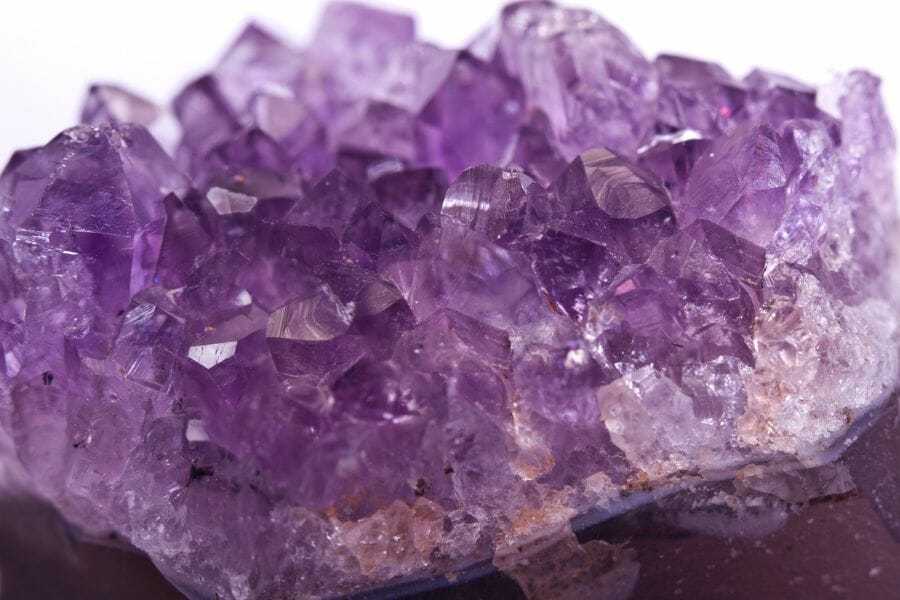
The Big Beryl Mine in Georgia is a hidden gem for rockhounds and mineral enthusiasts. Located in the northern part of the state, this mine is in the heart of the Appalachian Mountains, surrounded by rugged terrain and picturesque landscapes. It’s like a hidden oasis, tucked away from the hustle and bustle of everyday life.
The mine is named after the mineral beryl, a gemstone in various colors, including green, blue, and pink. The mine is also known for its abundance of other minerals, including mica, feldspar, and quartz.
Ensure you know Georgia’s most recent collecting laws before bringing anything home.
Where we found amethyst in the Big Beryl Mine
We found amethysts in all the Big Beryl Mine mining areas.
If you want REAL results finding incredible rocks and minerals you need one of these 👇👇👇
Finding the coolest rocks in isn’t luck, it's knowing what to look for. Thousands of your fellow rock hunters are already carrying Rock Chasing field guides. Maybe it's time you joined the community.
Lightweight, mud-proof, and packed with clear photos, it’s become the go-to tool for anyone interested discovering what’s hidden under our red dirt and what they've already found.
Join them, and make your next rockhounding trip actually pay off.
What makes it different:
- 📍 Find and identify 140 incredible crystals, rocks, gemstones, minerals, and geodes across the USA
- 🚙 Field-tested across America's rivers, ranchlands, mountains, and roadcuts
- 📘 Heavy duty laminated pages resist dust, sweat, and water
- 🧠 Zero fluff — just clear visuals and straight-to-the-point info
- ⭐ Rated 4.8★ by real collectors who actually use it in the field
Coldwater Creek
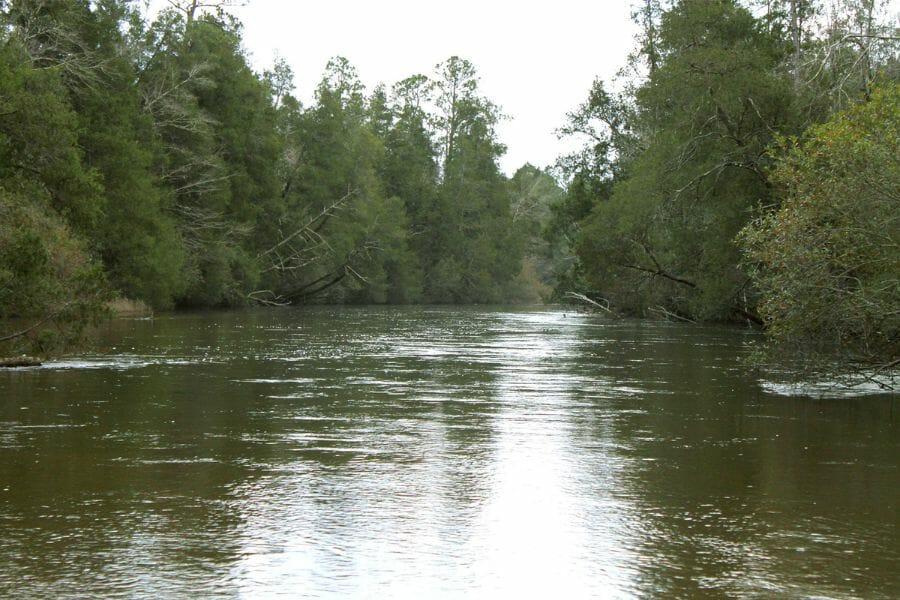
Coldwater Creek is a popular destination for outdoor enthusiasts in Georgia, offering stunning scenery and unique geological features. Located in the northern part of the state, rugged mountains and lush forests surround this creek – it’s like a nature lover’s paradise. The creek is known for its crystal-clear waters, perfect for outside activities.
The geology of Coldwater Creek is quite fascinating – it’s like a natural laboratory waiting to be explored. The creek runs through an area of the Appalachian Mountains rich in minerals, including quartz, feldspar, and mica. These minerals are formed within pegmatite veins, created by the slow cooling of magma deep within the earth’s crust.
To get to Coldwater Creek, you must navigate some rocky terrain and steep hills. But once you arrive, you’ll be rewarded with breathtaking views and the peaceful sound of rushing water.
Where we found amethyst in the Coldwater Creek
Amethysts can be located along the banks of Coldwater Creek. Check out our guide to amethyst crystal prices if you want to know the value of your finds!
Garret Mine
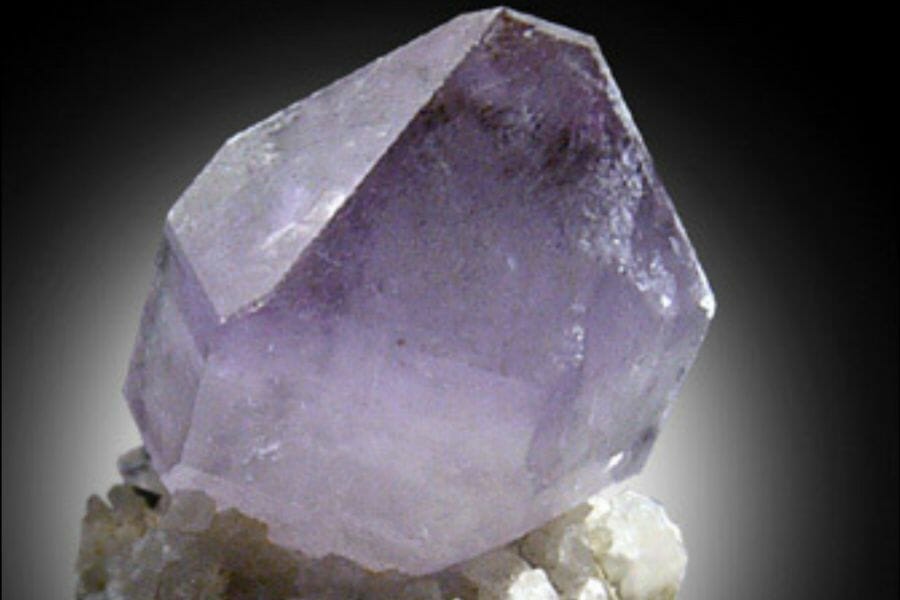
The Garrett Mine in Georgia is a historic mine located in the northeast part of the state. The mine has a long history of producing significant amounts of gold and other precious metals. It has been operating since the early 1800s and has seen its fair share of ups and downs.
Today, the Garrett Mine is still a working mine known for its rich deposits of gold and other valuable metals. The mine is managed by a team of experienced professionals who use advanced techniques and technology to extract the minerals from the ground.
Where we found amethyst in the Garrett Mine
You can find amethysts in and around the Garrett Mine.
Hogg Mine
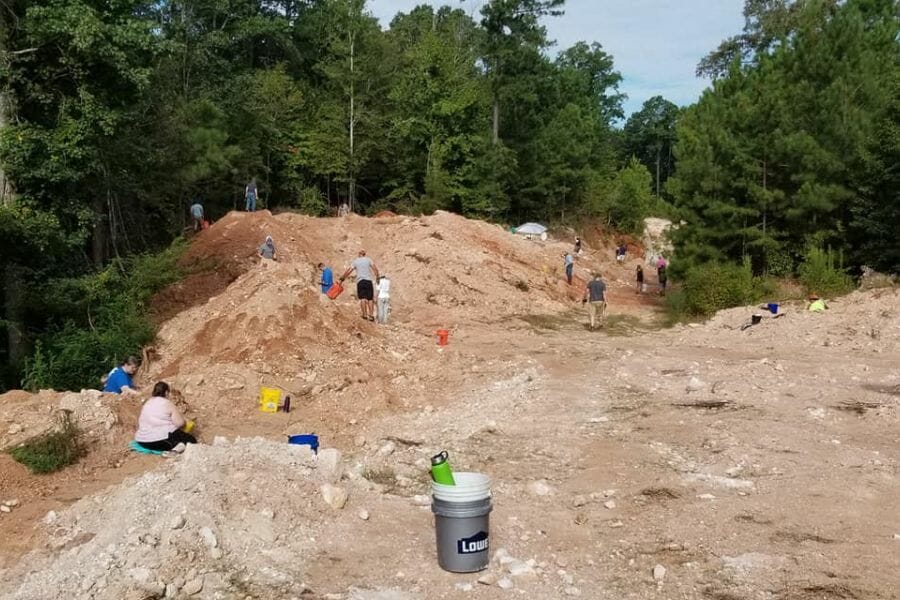
The Hogg Mine in Georgia is another historic mine located in the western part of the state. The mine has operated since the early 1800s and has a long history of producing gemstones, particularly amethyst, and quartz.
The mine was named after William Hogg, a prominent businessman who owned the property in the late 1800s. Hogg was known for his contributions to the community and his philanthropy.
The Hogg Mine is a popular destination for rockhounds and mineral enthusiasts, who come from all over the world to collect specimens from the mine’s rich deposits. The mine is managed by a team of experienced professionals who take great care to ensure visitors’ safety and the site’s preservation.
Where we found amethyst in the Hogg Mine
Amethysts are located at the Hogg Mine in Troup County.
Rabun County
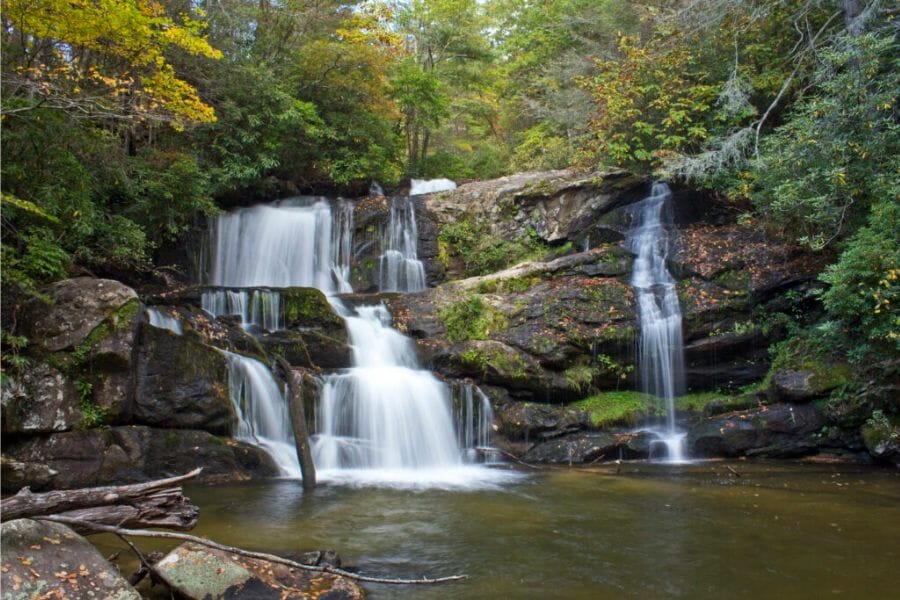
Rabun County is a scenic and historic county in Georgia’s northeast corner. Known for its natural beauty and outdoor recreation opportunities, Rabun County is a popular destination for tourists and outdoor enthusiasts.
Rabun County has a rich history dating back to the 1800s when it was a hub for agriculture and mining. Today, the county has several historic sites and landmarks, including the Foxfire Museum and Heritage Center, which preserves the area’s Appalachian culture and traditions. The county is also abundant in mines where you can find different crystals and rocks.
Where we found amethyst in Rabun County
There is an abundance of amethysts in Rabun County. You can find them in the following places:
- The Wilson Farm in Clayton
- The Smith Mine
- The Black Creek along the Rabun Gap
- At Tallulah River
- At John A. Wilson Prospect
- At the Ledbetter Mine and Prospect
- The mine dumps at Mountain City area
- In North Georgia Company Mine
Other Great Places To Mine For Amethyst in Georgia
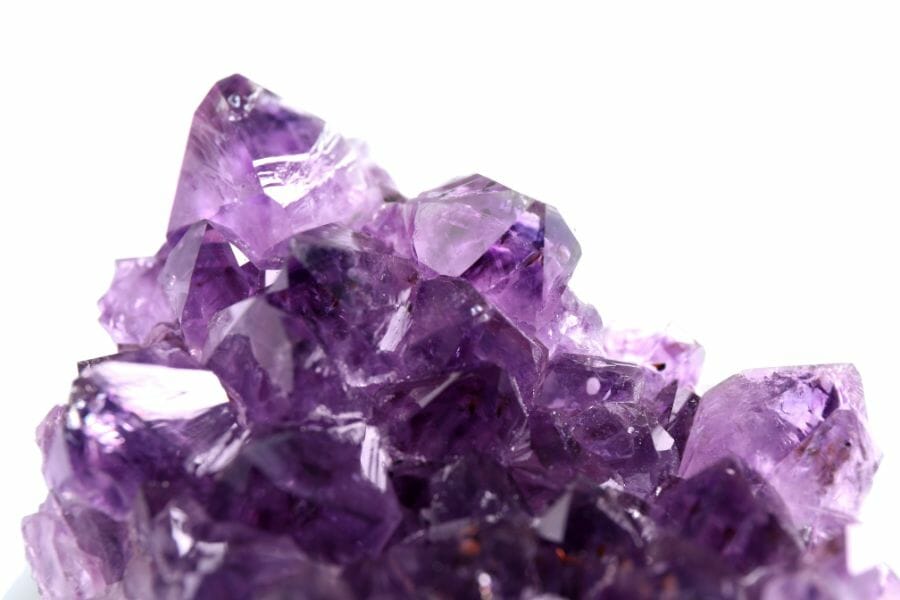
Our recommendations by county
We’ve mentioned our best picks for amethyst spots in Georgia, but we can still suggest many more areas. To make things easier, we’ve sorted them by county below.
| County | Location |
| Cherokee | The Bennet, Chapman, and Hendrix mica mines |
| Elbert | Antioch Mine |
| Elbert | Perkins Place |
| Elbert | The Yellow Mine |
| Fayette | Loose in field soil of Homer Kelin Farm |
| Forsyth | Gilbert Mine |
| Forsyth | Area pegmatite outcrops of Sheltonville |
| Fulton | Durell Cook Farm |
| Greene | Siloam Quarry |
| Henry | Millers Mill |
| Jasper | Area roadcuts of Hillsboro |
| Jasper | Barron Fullerton Hospital area |
| McDuffle | Germany Creek |
| Morgan | Area of Benny Ray |
| Towns | In banks and gravels of Charlie’s Creek |
| Union | South of Hightower Bald, between Jacks Branch and Shoal Branch |
Additional areas you can find amethyst
We want to help you search because Georgia has a large territory. You should explore the following significant and more specific locations where amethysts are regularly found:
Mines and mine dumps
Mines and mine dumps are great places to find amethyst for collectors because they often contain the necessary geological conditions that lead to the formation of amethyst. Amethyst is a purple variety of quartz that forms in cavities within igneous and metamorphic rocks.
These rocks are often found in mines or mine dumps, and excavated during mining operations.
Mines and mine dumps also allow collectors to find high-quality specimens of amethyst. The amethyst crystals found in these locations are often larger and more well-formed than in other locations. This is because the crystals have had more time to grow and develop in the stable, protected environment of the mine or mine dump.
Quarries
Quarries are great places to find amethyst for collectors because they offer an environment where amethyst can grow and thrive. Amethyst is a variety of quartz formed when silica-rich fluids fill cavities in rocks and crystallize over time.
Quarries often expose large rock areas containing these cavities, providing an ideal location for amethyst to form.
In addition to the favorable geological conditions, quarries can yield high-quality amethyst specimens. The amethyst crystals found in quarries are often larger and more well-formed than in other locations. This is because the crystals have had more time to grow and develop in the stable, protected environment of the quarry.
Rivers and riverbanks
Rivers and riverbanks are great places to find amethyst for collectors because they provide a natural environment where crystals can form and be easily accessible. Amethyst is a variety of quartz that forms in cavities within igneous and metamorphic rocks.
Over time, these rocks can be weathered and eroded, releasing the amethyst crystals into the surrounding soil and water.
As rivers flow over these rocks and minerals, they can transport amethyst crystals downstream, eventually depositing them along riverbanks. This process can create a rich source of amethyst specimens that enthusiasts and collectors can collect.
Streams and creeks
Rivers and riverbanks are great places to find amethyst for collectors because they provide a natural environment where crystals can form and be easily accessible. Amethyst is a variety of quartz that forms in cavities within igneous and metamorphic rocks. Over time, these rocks can be weathered and eroded, releasing the amethyst crystals into the surrounding soil and water.
As rivers flow over these rocks and minerals, they can transport amethyst crystals downstream, eventually depositing them along riverbanks. This process can create a rich source of amethyst specimens that enthusiasts and collectors can collect.
Common Amethyst-Hunting Questions
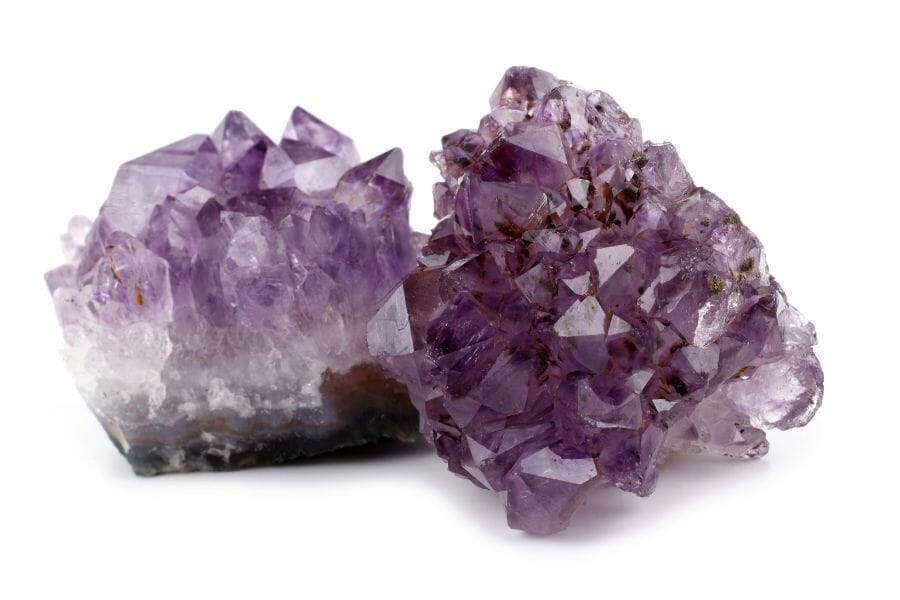
It’s important to respond to certain often asked questions about Georgia amethysts, like the following:
Where can you find amethyst geodes in Georgia?
Unfortunately, Georgia doesn’t naturally have amethyst geodes, but there are several rock shops nearby where you might be able to discover them, as well as other gems.
Is it illegal to collect amethyst in Georgia?
Amethyst collecting is permitted in Georgia if you abide by municipal regulations. If you’re on public land, follow all relevant local laws. Make sure you have permission if you’re on private property.
The Best Places To Buy Amethyst In Georgia
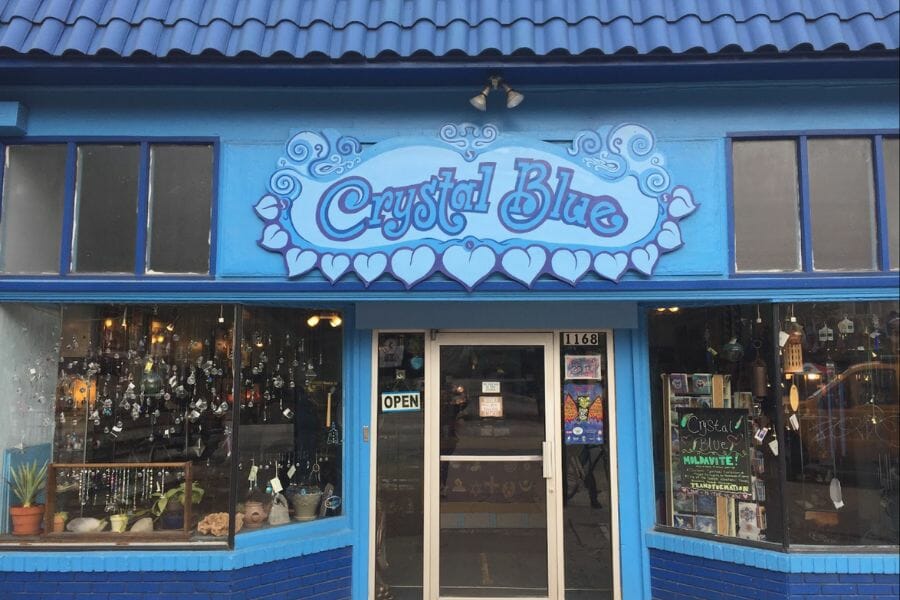
Not everyone likes spending hours stumbling through the woods in search of amethysts. Sometimes, all you need for your collection or workplace is something aesthetic and easy to obtain. The following is a list of rock shops where you can easily buy amethyst crystals.
- Crystal Blue – 1168 Euclid Ave NE, Atlanta, GA 30307
- Crystal Hound Minerals – 10101 Davis St #100, Braselton, GA 30517
- The Olde Ones – 4086 Covington Hwy Ste 1300, Decatur, GA 30032
- Stoneage Natural Rocks and Crystals – 3333 Buford Dr #1022, Buford, GA 30519
- Wingostarr Jewelry Studio – 10 S Brooks St Suite 2, Cleveland, GA 30528
Additional places to find amethyst in nearby states
If you’ve already tried all of our recommendations above or are planning a trip out of the state you should check out our guides for neighboring states:
If you have any recommendations for our list, please leave a comment below!

